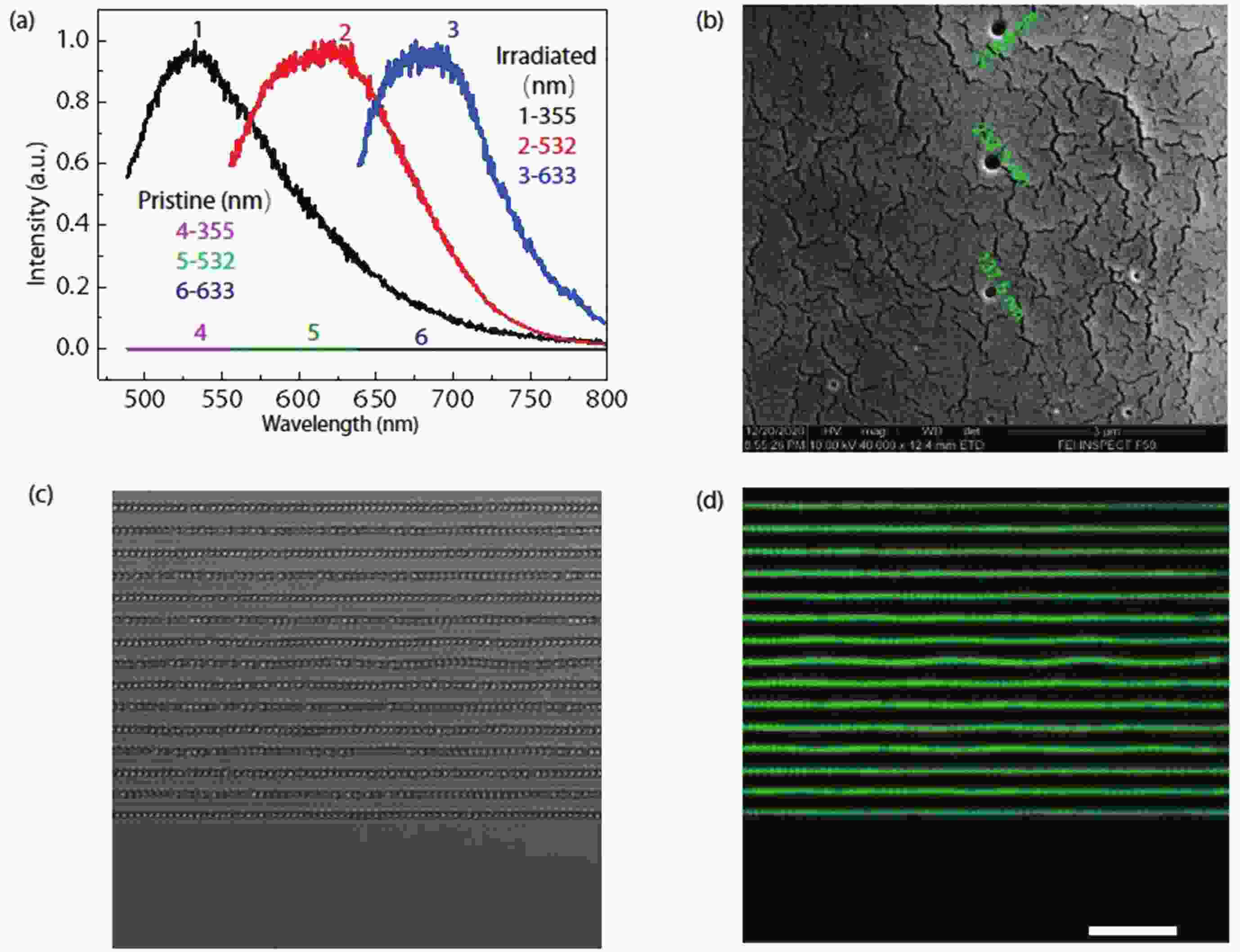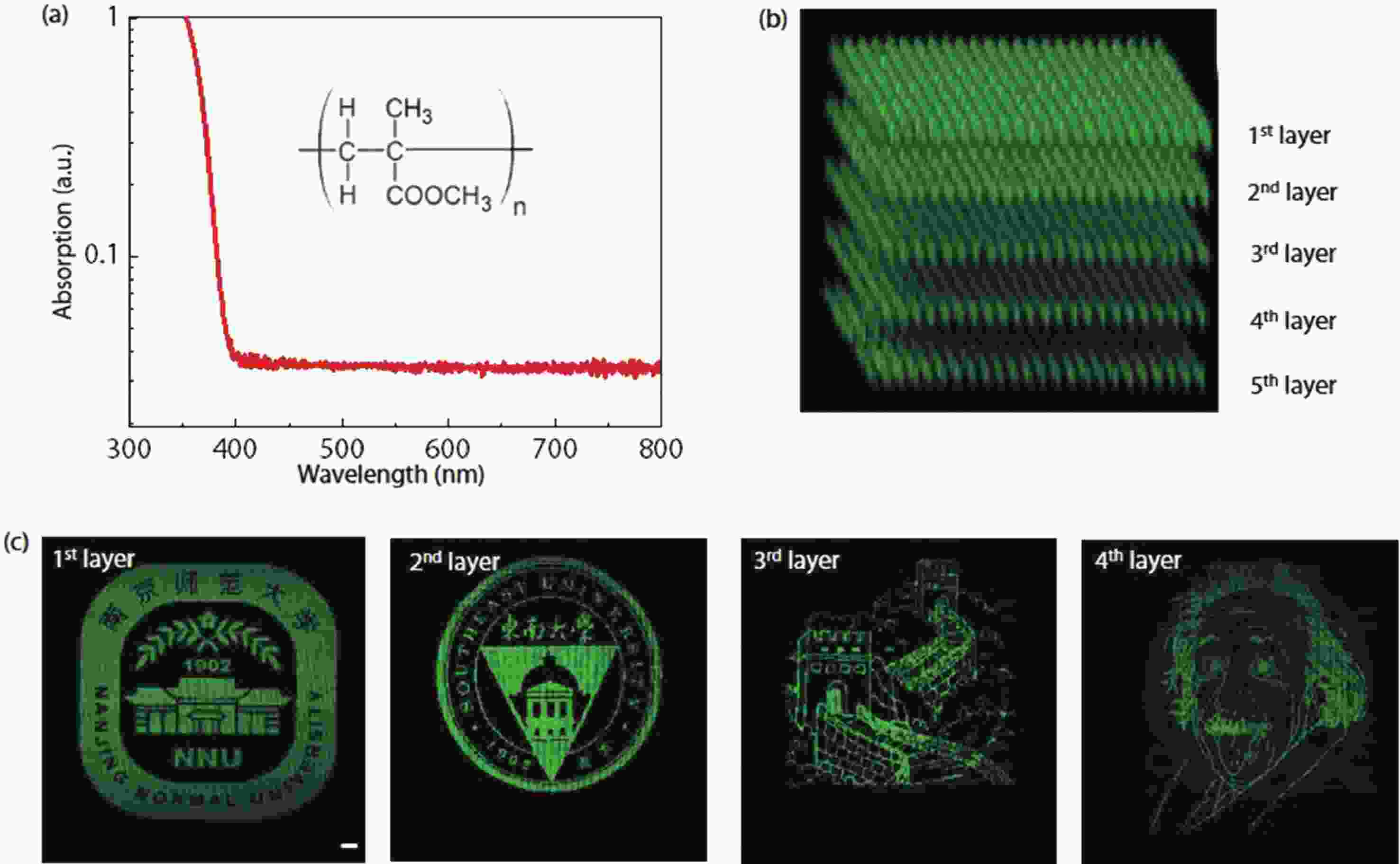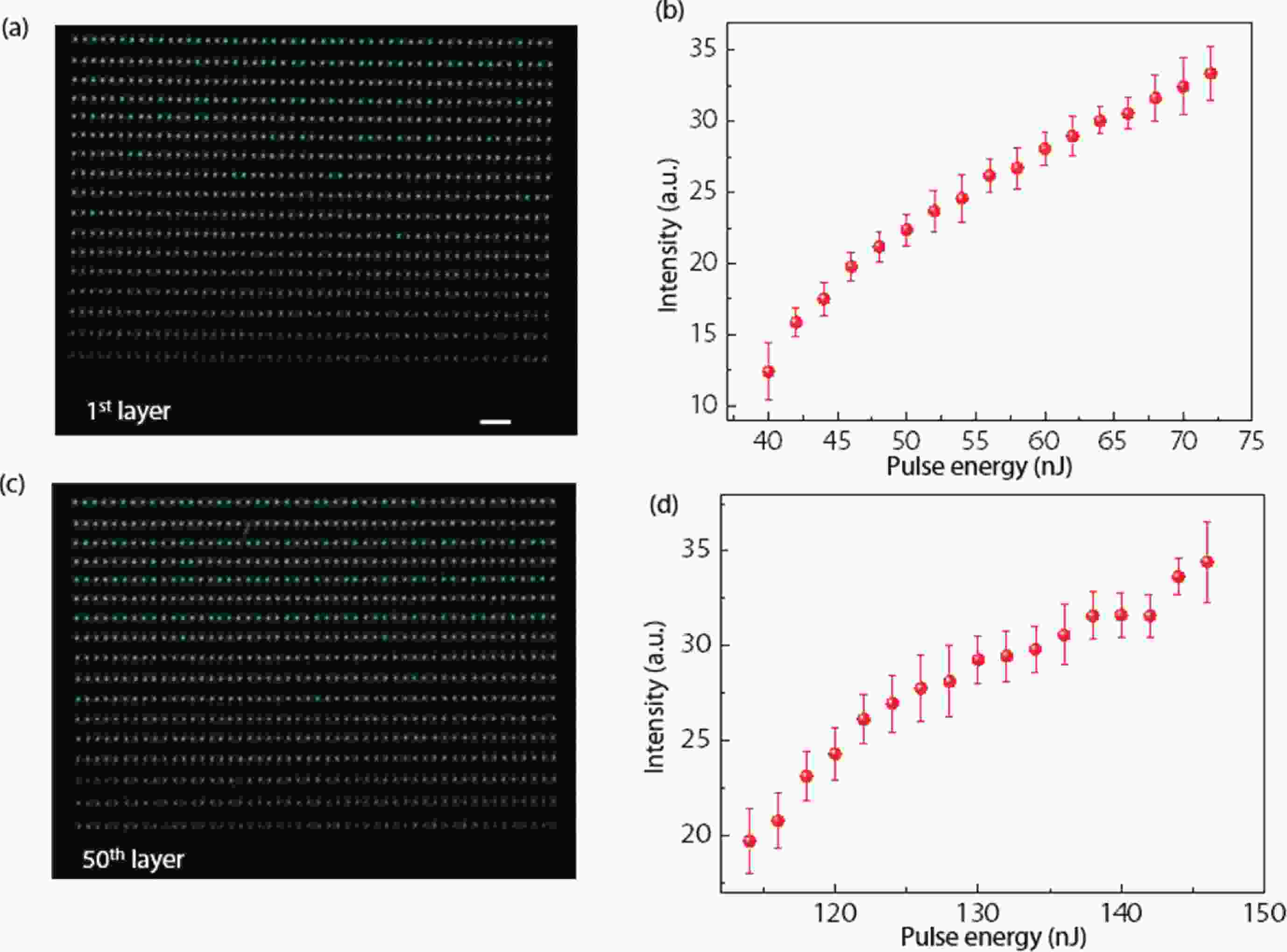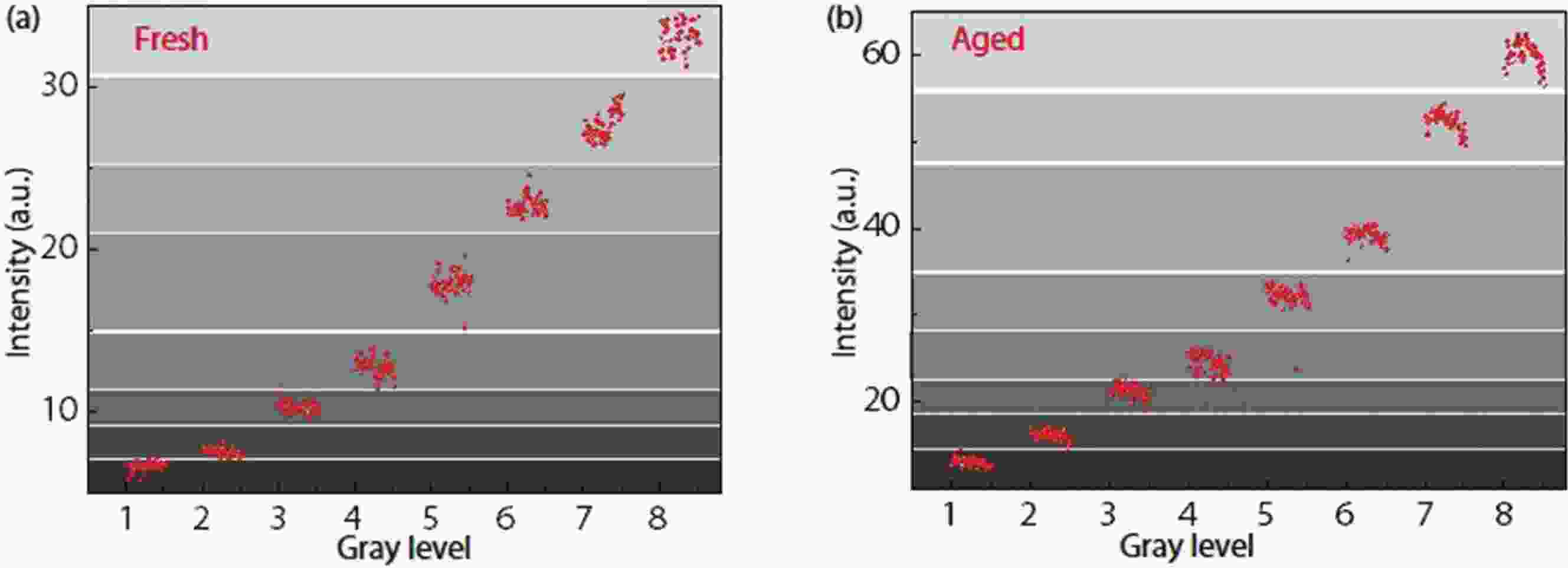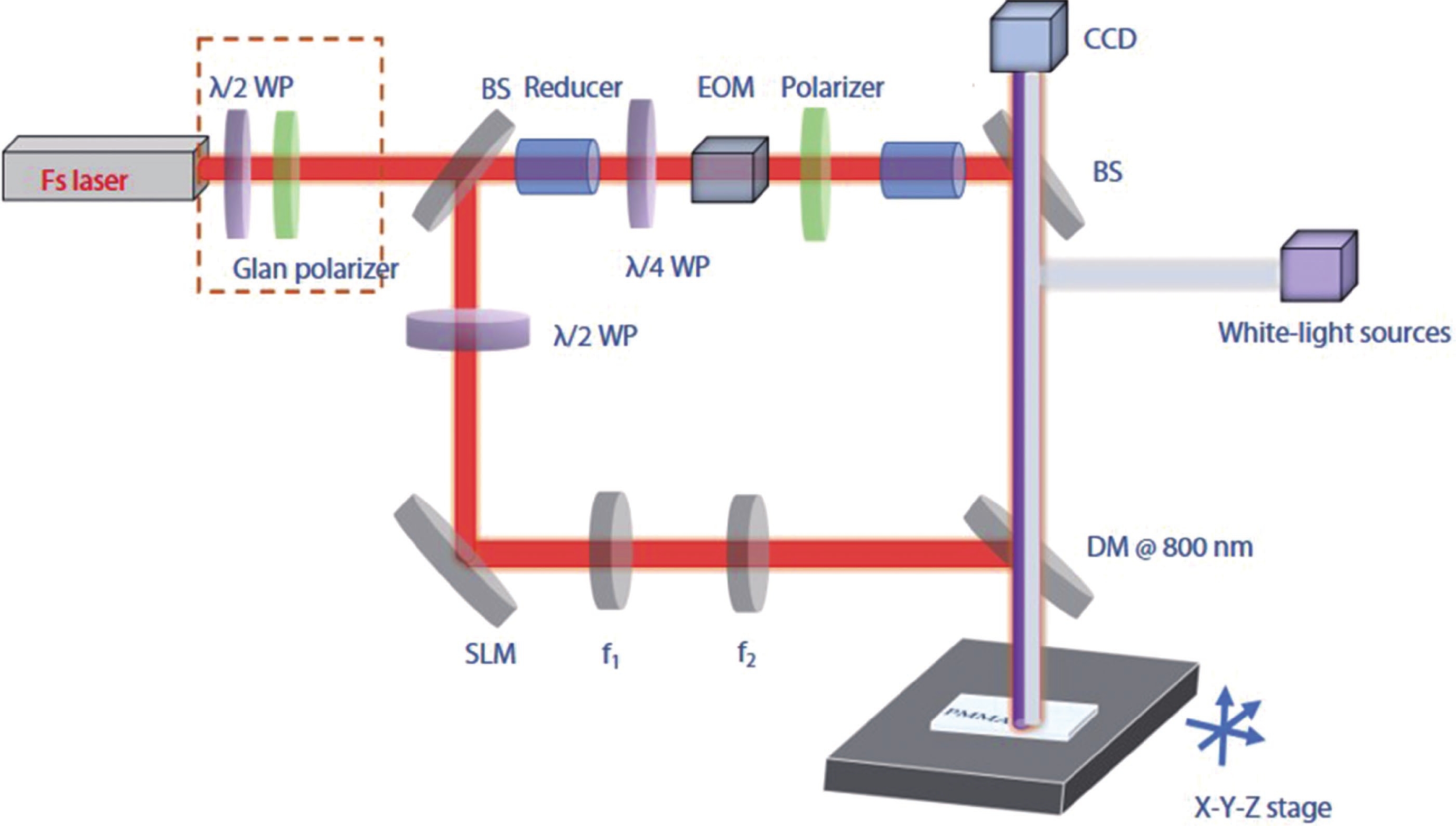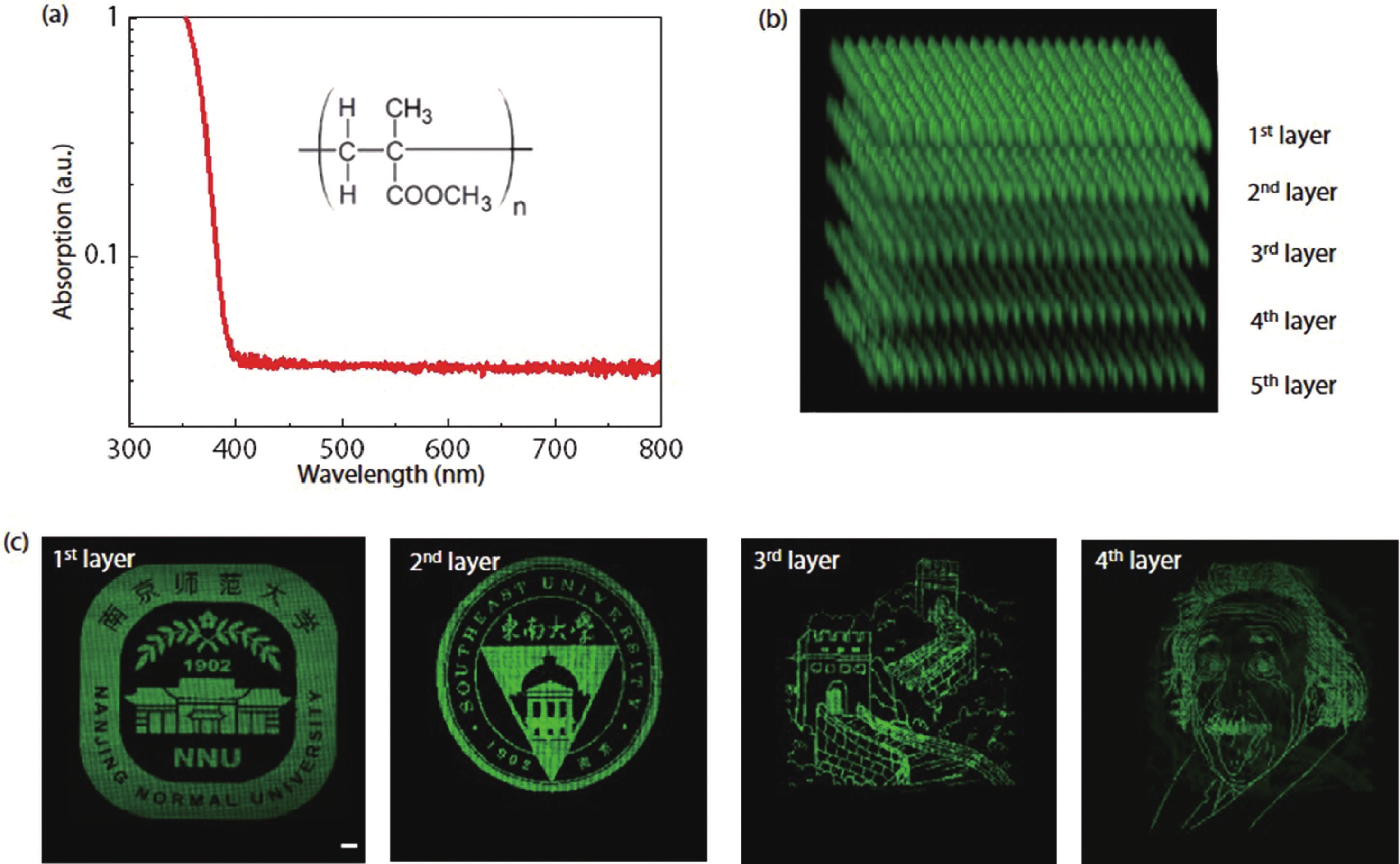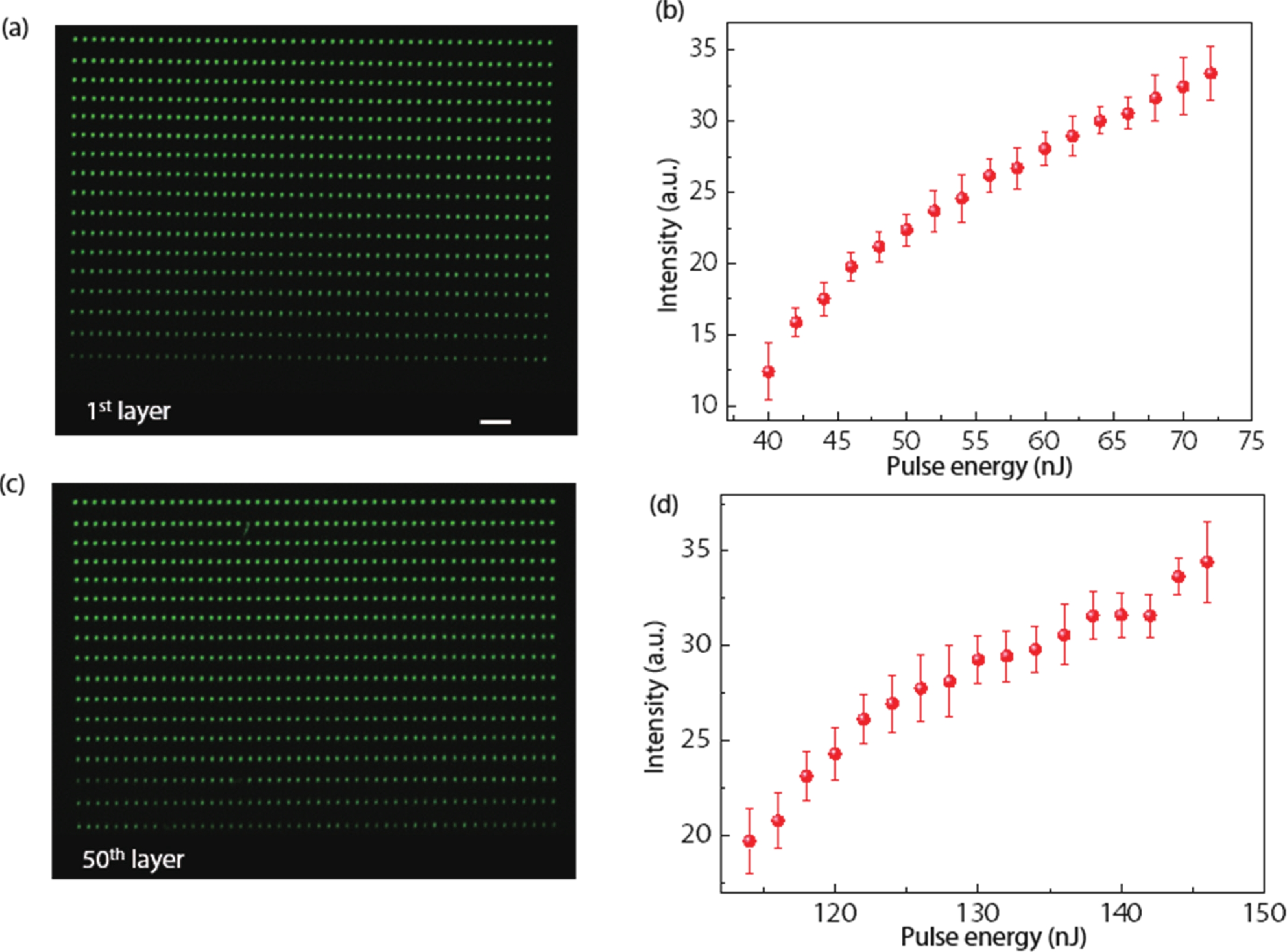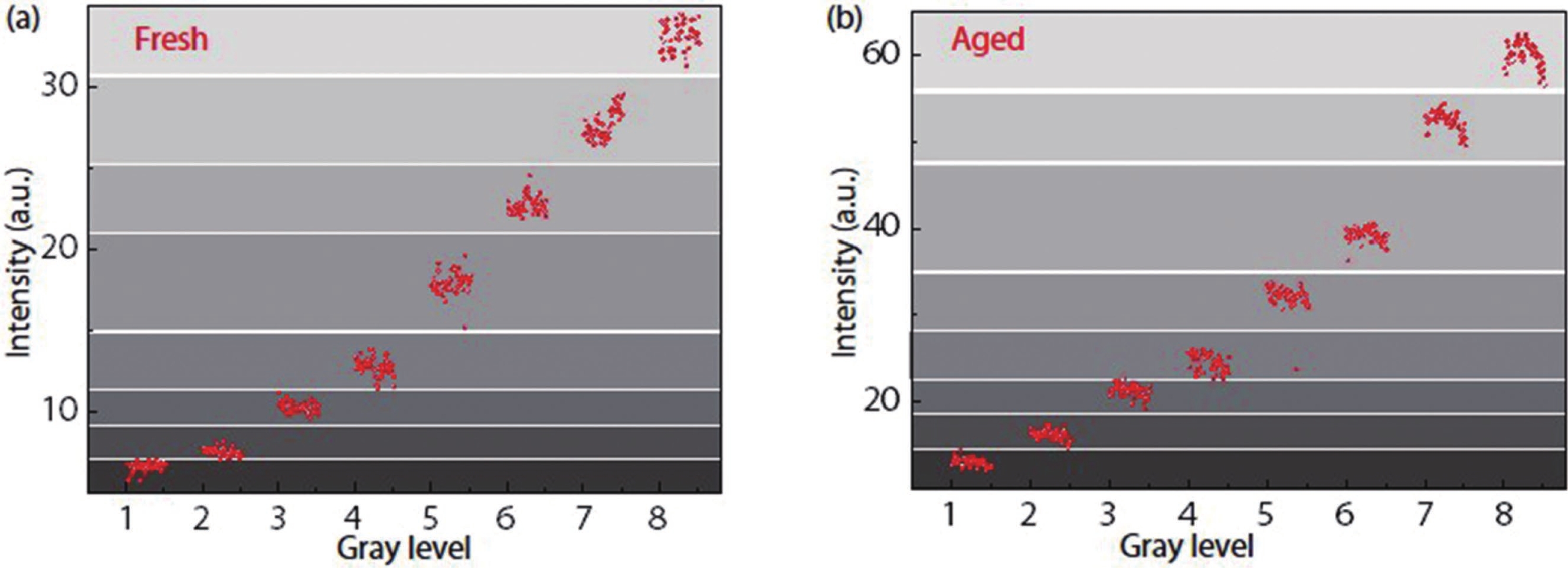| Citation: |
Xin Wei, Weiwei Zhao, Jintao Yang, Yong Zhang, Junming Song, Zhenhua Ni, Junpeng Lu, Hongwei Liu. Direct writing-in and visualizing reading-out data storage with high capacity in low-cost plastics[J]. Journal of Semiconductors, 2022, 43(6): 062301. doi: 10.1088/1674-4926/43/6/062301
X Wei, W W Zhao, J T Yang, Y Zhang, J M Song, Z H Ni, J P Lu, H W Liu. Direct writing-in and visualizing reading-out data storage with high capacity in low-cost plastics[J]. J. Semicond, 2022, 43(6): 062301. doi: 10.1088/1674-4926/43/6/062301
Export: BibTex EndNote
|
Direct writing-in and visualizing reading-out data storage with high capacity in low-cost plastics
doi: 10.1088/1674-4926/43/6/062301
More Information-
Abstract
The explosive growth of the global data volume demands new and advanced data storage methods. Here, we report that data storage with ultrahigh capacity (~1 TB per disc) can be realized in low-cost plastics, including polycarbonate (PC), precipitated calcium carbonate (PCC), polystyrene (PS), and polymethyl methacrylate (PMMA), via direct fs laser writing. The focused fs laser can modify the fluorescence of written regions on the surface and in the interior of PMMA, enabling three-dimensional (3D) information storage. Through the 3D laser processing platform, a 50-layer data record with low bit error (0.96%) is archived. Visual reading of data is empowered by the fluorescence contrast. The broad variation of fluorescence intensity assigns 8 gray levels, corresponding to 3 bits on each spot. The gray levels of each layer present high stability after long-term aging cycles, confirming the robustness of data storage. Upon single pulse control via a high-frequency electro-optic modulator (EOM), a fast writing speed (~1 kB/s) is achieved, which is limited by the repetition frequency of the fs laser.-
Keywords:
- laser modification,
- fluorescence,
- micro-nano fabrication
-
References
[1] Dai Q F, Min O Y, Yuan W G, et al. Encoding random hot spots of a volume gold nanorod assembly for ultralow energy memory. Adv Mater, 2017, 29, 1701918 doi: 10.1002/adma.201701918[2] Gu M, Zhang Q, Lamon S. Nanomaterials for optical data storage. Nat Rev Mater, 2016, 1, 16070 doi: 10.1038/natrevmats.2016.70[3] Lin S, Lin H, Ma C, et al. High-security-level multi-dimensional optical storage medium: Nanostructured glass embedded with LiGa5O8:Mn2+ with photostimulated luminescence. Light Sci Appl, 2020, 9, 22 doi: 10.1038/s41377-020-0258-3[4] van de Nes A S, Braat J M, Pereira S F. High-density optical data storage. Rep Prog Phys, 2006, 69, 2323 doi: 10.1088/0034-4885/69/8/R02[5] Kawata S, Kawata Y. Three-dimensional optical data storage using photochromic materials. Chem Rev, 2000, 100, 1777 doi: 10.1021/cr980073p[6] Cumpston B H, Ananthavel S P, Barlow S, et al. Two-photon polymerization initiators for three-dimensional optical data storage and microfabrication. Nature, 1999, 398, 51 doi: 10.1038/17989[7] Corredor C, Huang Z L, Belfield K. Two-photon 3D optical data storage via fluorescence modulation of an efficient fluorene dye by a photochromic diarylethene. Adv Mater, 2006, 18, 2910 doi: 10.1002/adma.200600826[8] Shen Y, Swiatkiewicz J, Jakubczyk D, et al. High-density optical data storage with one-photon and two-photon near-field fluorescence microscopy. Appl Opt, 2001, 40, 938 doi: 10.1364/AO.40.000938[9] Belfield K D, Schafer K J. A new photosensitive polymeric material for WORM optical data storage using multichannel two-photon fluorescence readout. Chem Mater, 2002, 14, 3656 doi: 10.1021/cm010799t[10] Kämpf G, Freitag D, Fengler G, et al. Polymers for electrical and optical data storage. Polym Adv Technol, 1992, 3, 169 doi: 10.1002/pat.1992.220030404[11] Betzig E, Trautman J K. Near-field optics: Microscopy, spectroscopy, and surface modification beyond the diffraction limit. Science, 1992, 257, 189 doi: 10.1126/science.257.5067.189[12] Hu Y L, Wu D, Li J W, et al. Two-stage optical recording: Photoinduced birefringence and surface-mediated bits storage in bisazo-containing copolymers towards ultrahigh data memory. Opt Express, 2016, 24, 23557 doi: 10.1364/OE.24.023557[13] Yuan X P, Zhao M, Guo X J, et al. Ultra-high capacity for three-dimensional optical data storage inside transparent fluorescent tape. Opt Lett, 2020, 45, 1535 doi: 10.1364/OL.387278[14] Sano H, Shima T, Kuwahara M, et al. Response function of super-resolution readout of an optical disc studied by coupled electromagnetic–thermal simulation. Jpn J Appl Phys, 2016, 55, 09SB02 doi: 10.7567/JJAP.55.09SB02[15] Zhai F X, Zuo F Y, Huang H, et al. Optical switch formation in antimony super-resolution mask layers induced by picosecond laser pulses. Chin Phys Lett, 2010, 27, 014209 doi: 10.1088/0256-307X/27/1/014209[16] Shi L P, Chong T C, Miao X S, et al. A new structure of super-resolution near-field phase-change optical disk with a Sb2Te3 mask layer. Jpn J Appl Phys, 2001, 40, 1649 doi: 10.1143/JJAP.40.1649[17] Liu Y, Lu Y, Yang X, et al. Amplified stimulated emission in upconversion nanoparticles for super-resolution nanoscopy. Nature, 2017, 543, 229 doi: 10.1038/nature21366[18] Zijlstra P, Chon J W M, Gu M. Five-dimensional optical recording mediated by surface plasmons in gold nanorods. Nature, 2009, 459, 410 doi: 10.1038/nature08053[19] Fang X, Ren H, Gu M. Orbital angular momentum holography for high-security encryption. Nat Photonics, 2020, 14, 102 doi: 10.1038/s41566-019-0560-x[20] Li X, Ren H, Chen X, et al. Athermally photoreduced graphene oxides for three-dimensional holographic images. Nat Commun, 2015, 6, 6984 doi: 10.1038/ncomms7984[21] Tan D Z, Sun X Y, Wang Q, et al. Fabricating low loss waveguides over a large depth in glass by temperature gradient assisted femtosecond laser writing. Opt Lett, 2020, 45, 3941 doi: 10.1364/OL.396861[22] Wang Z, Tan D Z, Qiu J R. Single-shot photon recording for three-dimensional memory with prospects of high capacity. Opt Lett, 2020, 45, 6274 doi: 10.1364/OL.409171[23] Chan J W, Huser T R, Risbud S H, et al. Waveguide fabrication in phosphate glasses using femtosecond laser pulses. Appl Phys Lett, 2003, 82, 2371 doi: 10.1063/1.1565708[24] Huang X J, Guo Q Y, Yang D D, et al. Reversible 3D laser printing of perovskite quantum dots inside a transparent medium. Nat Photonics, 2020, 14, 82 doi: 10.1038/s41566-019-0538-8[25] Lee H W, Schmidt M A, Uebel P, et al. Optofluidic refractive-index sensor in step-index fiber with parallel hollow micro-channel. Opt Express, 2011, 19, 8200 doi: 10.1364/OE.19.008200[26] Miura K, Qiu J R, Fujiwara S, et al. Three-dimensional optical memory with rewriteable and ultrahigh density using the valence-state change of samarium ions. Appl Phys Lett, 2002, 80, 2263 doi: 10.1063/1.1459769[27] Nie Z G, Lee H, Yoo H, et al. Multilayered optical bit memory with a high signal-to-noise ratio in fluorescent polymethylmethacrylate. Appl Phys Lett, 2009, 94, 111912 doi: 10.1063/1.3103365[28] Salter P S, Baum M, Alexeev I, et al. Exploring the depth range for three-dimensional laser machining with aberration correction. Opt Express, 2014, 22, 17644 doi: 10.1364/OE.22.017644[29] Cumming B P, Jesacher A, Booth M J, et al. Adaptive aberration compensation for three-dimensional micro-fabrication of photonic crystals in lithium niobate. Opt Express, 2011, 19, 9419 doi: 10.1364/OE.19.009419[30] Kuang Z, Liu D, Perrie W, et al. Fast parallel diffractive multi-beam femtosecond laser surface micro-structuring. Appl Surf Sci, 2009, 255, 6582 doi: 10.1016/j.apsusc.2009.02.043[31] Cheng H, Xia C, Kuebler S M, et al. Aberration correction for SLM-generated Bessel beams propagating through tilted interfaces. Opt Commun, 2020, 475, 126213 doi: 10.1016/j.optcom.2020.126213[32] Hacker M, Stobrawa G, Sauerbrey R, et al. Micromirror SLM for femtosecond pulse shaping in the ultraviolet. Appl Phys B, 2003, 76, 711 doi: 10.1007/s00340-003-1180-0[33] Alshehri A M, Deepak K L N, Marquez D T, et al. Localized nanoclusters formation in PDMS upon irradiation with femtosecond laser. Opt Mater Express, 2015, 5, 858 doi: 10.1364/OME.5.000858[34] Shibagaki K, Takada N, Sasaki K, et al. Synthetic characteristics of large carbon cluster ions by laser ablation of polymers in vacuum. J Appl Phys, 2002, 93, 655 doi: 10.1063/1.1525402[35] Gu M, Li X P. The Road to multi-dimensional bit-by-bit optical data storage. Opt Photonics News, 2010, 21, 28 doi: 10.1364/OPN.21.7.000028[36] Ma Z C, Zhang Y L, Han B, et al. Femtosecond-laser direct writing of metallic micro/nanostructures: From fabrication strategies to future applications. Small Methods, 2018, 2, 1700413 doi: 10.1002/smtd.201700413[37] Deepak K L N, Kuladeep R, Rao S V, et al. Luminescent microstructures in bulk and thin films of PMMA, PDMS, PVA, and PS fabricated using femtosecond direct writing technique. Chem Phys Lett, 2011, 503, 57 doi: 10.1016/j.cplett.2010.12.069[38] Huang X J, Guo Q Y, Kang S L, et al. Three-dimensional laser-assisted patterning of blue-emissive metal halide perovskite nanocrystals inside a glass with switchable photoluminescence. ACS Nano, 2020, 14, 3150 doi: 10.1021/acsnano.9b08314[39] Kawata S, Sun H B, Tanaka T, et al. Finer features for functional microdevices. Nature, 2001, 412, 697 doi: 10.1038/35089130[40] Straub M, Gu M. Near-infrared photonic crystals with higher-order bandgaps generated by two-photon photopolymerization. Opt Lett, 2002, 27, 1824 doi: 10.1364/OL.27.001824[41] Jurado-Navas A, Balsells J M G, Paris J F, et al. General analytical expressions for the bit error rate of atmospheric optical communication systems. Opt Lett, 2011, 36, 4095 doi: 10.1364/OL.36.004095[42] Goldfarb I J, McHenry R J, Penski E C. Thermal degradation of polymers. I. Aspects of polytetrafluoroethylene degradation. J Polym Sci, 1962, 58, 1283 doi: 10.1002/pol.1962.1205816683 -
Supplements
 21120026suppl.pdf
21120026suppl.pdf

-
Proportional views





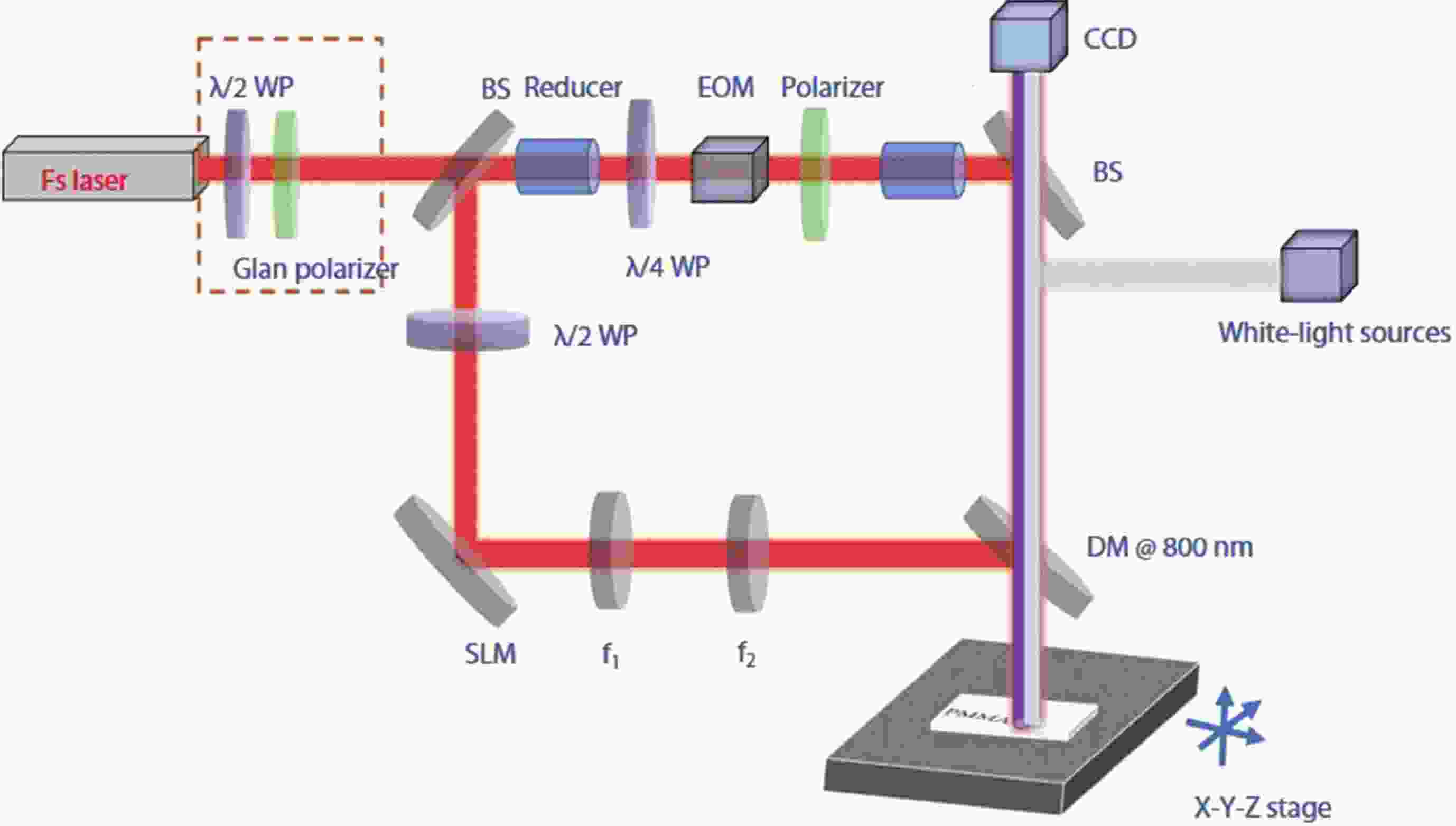
 DownLoad:
DownLoad:
